The Real Deal on Purple Ombre Hair: Cost, Care, and What to Expect
I’ve been working with hair color for a long time, and I’ve seen every trend you can imagine cycle through the salon. But you know what never really goes away? Bold, vivid colors. And purple… well, purple has a special kind of magic. That flawless purple ombre you see on your feed looks like it just happened, but honestly, it’s the result of hours of careful work and a real partnership between the stylist and the person in the chair.
In this article
So, let’s pull back the curtain. I want to walk you through what it really takes to get that dream hair and keep it looking amazing. This is the exact chat we’d be having if you were in my chair, getting ready for a big change.
First Things First: Let’s Talk About Your Hair
Before we even think about mixing color, we have to get real about the canvas we’re working with—your hair. Understanding a few basics is what separates a stunning salon result from a total DIY nightmare. When my clients get the ‘why’ behind the process, everything else (including the price tag) makes a lot more sense.
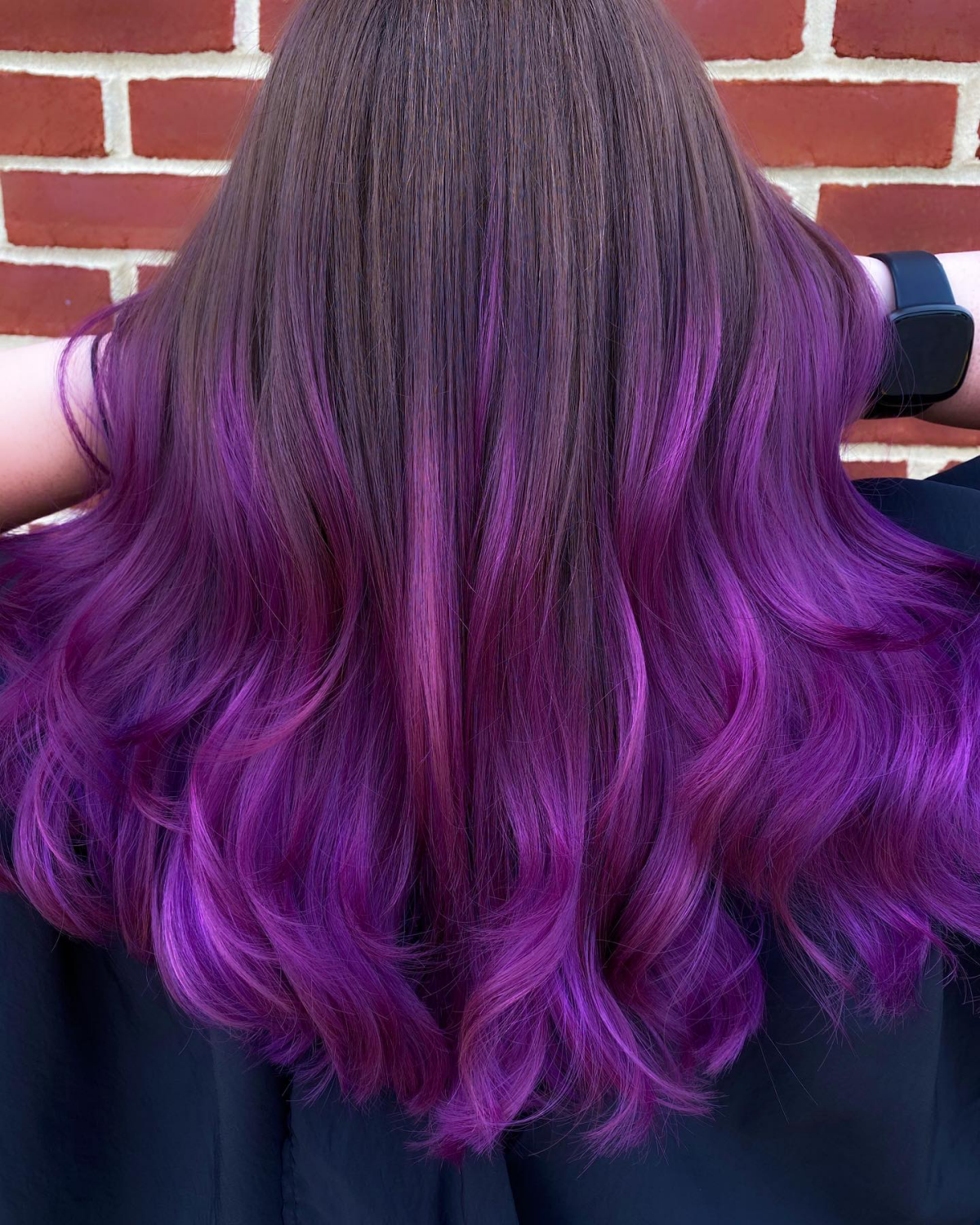
A Quick Look at a Hair Strand
Imagine a single strand of your hair. It’s got a few layers. The outside is the cuticle, which looks like tiny, overlapping roof shingles. When your hair is healthy, they lie flat, giving you that smooth, shiny look. To color your hair, we have to gently lift those shingles. The middle layer, the cortex, is where the main event happens. It holds your natural color pigment and gives your hair its strength. The goal of bleach is to get into the cortex and dissolve that pigment. It’s a delicate operation.
Lightening your hair is, by its nature, a damaging process. That’s just a fact. This is why professional application and the right aftercare aren’t just nice suggestions—they’re absolutely essential for keeping your hair healthy.
The Level System: A Colorist’s #1 Tool
In the hair world, we use a simple scale from 1 (jet black) to 10 (the palest, inside-of-a-banana-peel blonde) to measure how light or dark hair is. Your starting level is our ground zero. And here’s the key: to get a light, dreamy lavender, your hair must be lifted to a Level 9 or 10. For a deep, rich plum, a Level 7 or 8 might do the trick. Trying to put a pastel purple over dark hair is like using a yellow highlighter on black paper. It just won’t show up.
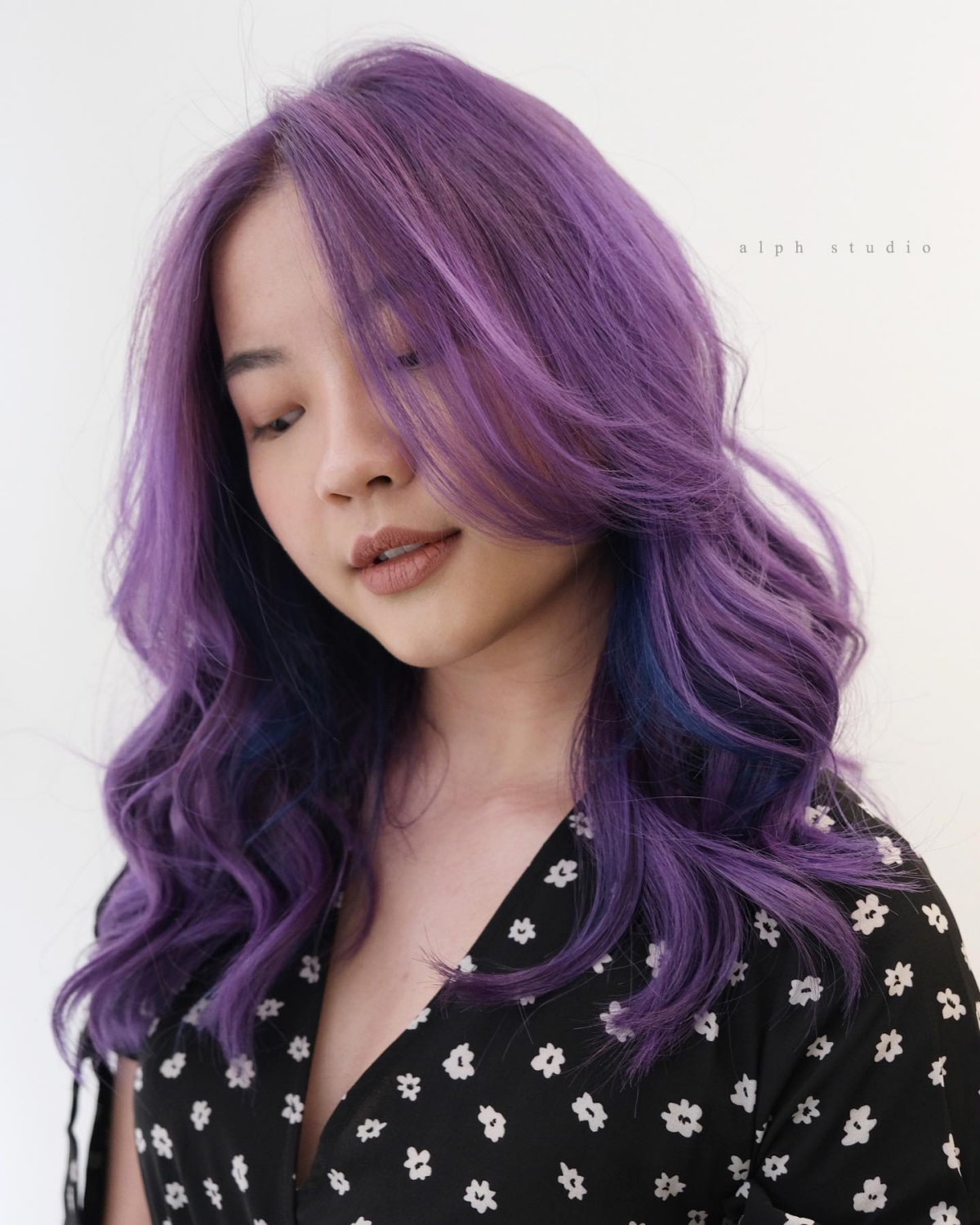
How Bleach and Purple Dyes Actually Work
Lightener (what most people call bleach) uses an oxidizing agent to permanently dissolve the melanin—your natural color—in the hair’s cortex. Once it’s gone, it’s gone for good. This is why a pro is so careful not to overlap lightener on hair that’s already been bleached. Doing so can lead to what we call a “chemical haircut,” which is as scary as it sounds. Trust me, I’ve had to fix it before, and it’s heartbreaking.
Most purples are direct dyes. Think of them as stains. They don’t develop like traditional color; their large molecules just sit on the surface of the pre-lightened hair. This is why they fade faster than other colors. Every wash, every hour in the sun, slowly wears that stain away. It’s also why the canvas underneath is so critical. A beautiful purple over a pale yellow base looks vibrant. That same purple over a brassy, orange-toned blonde? It can turn a murky, swampy color. Not the look we’re going for.
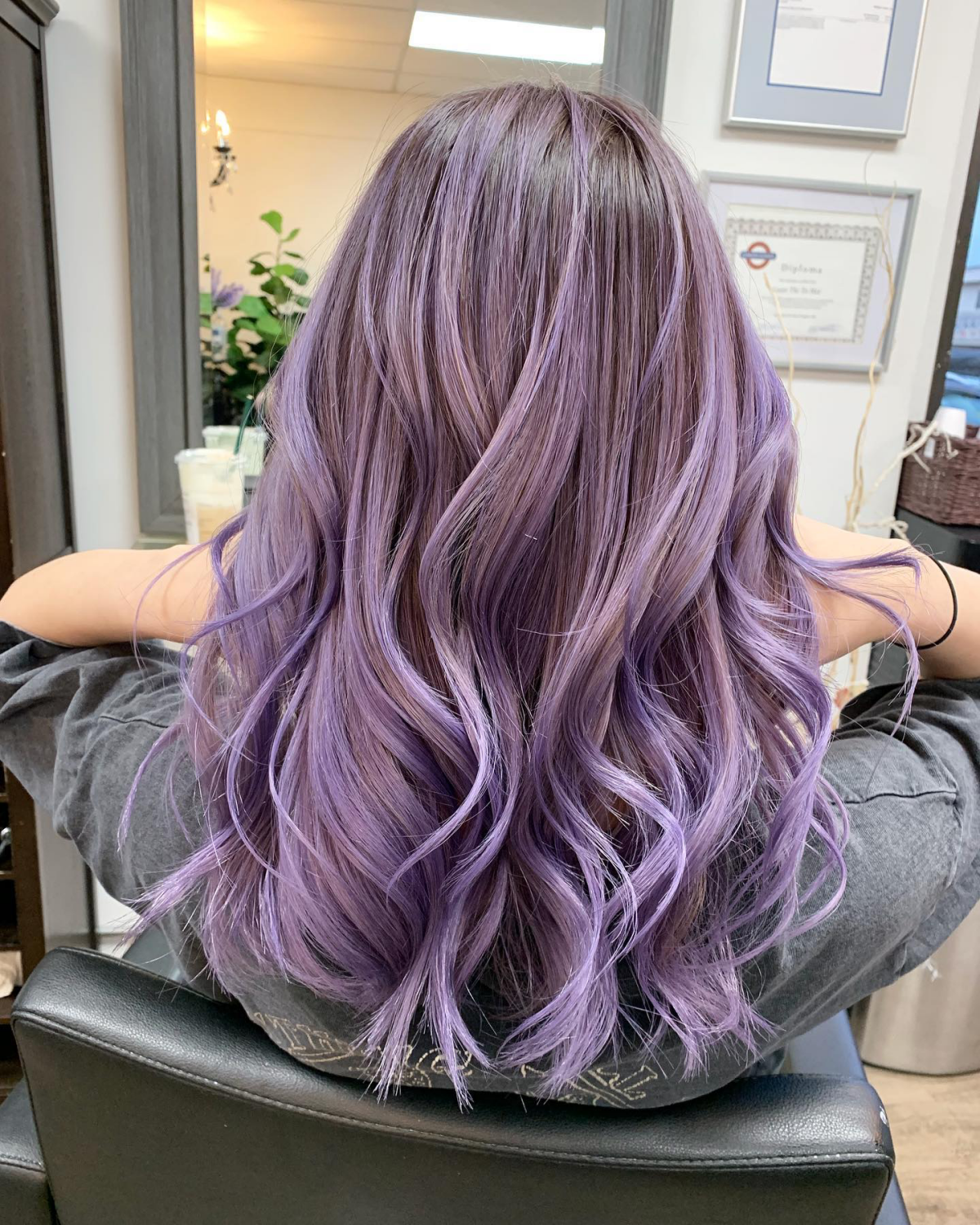
The Consultation: Our Game Plan for Great Hair
I will not touch anyone’s hair for a major color transformation without a detailed consultation. This 20-minute chat is where we build trust, set a realistic plan, and make sure we’re on the same page.
What’s Your Hair’s History?
The first thing I need to know is everything you’ve done to your hair for the last few years. Every box dye, every gloss, every
Galerie d’inspiration
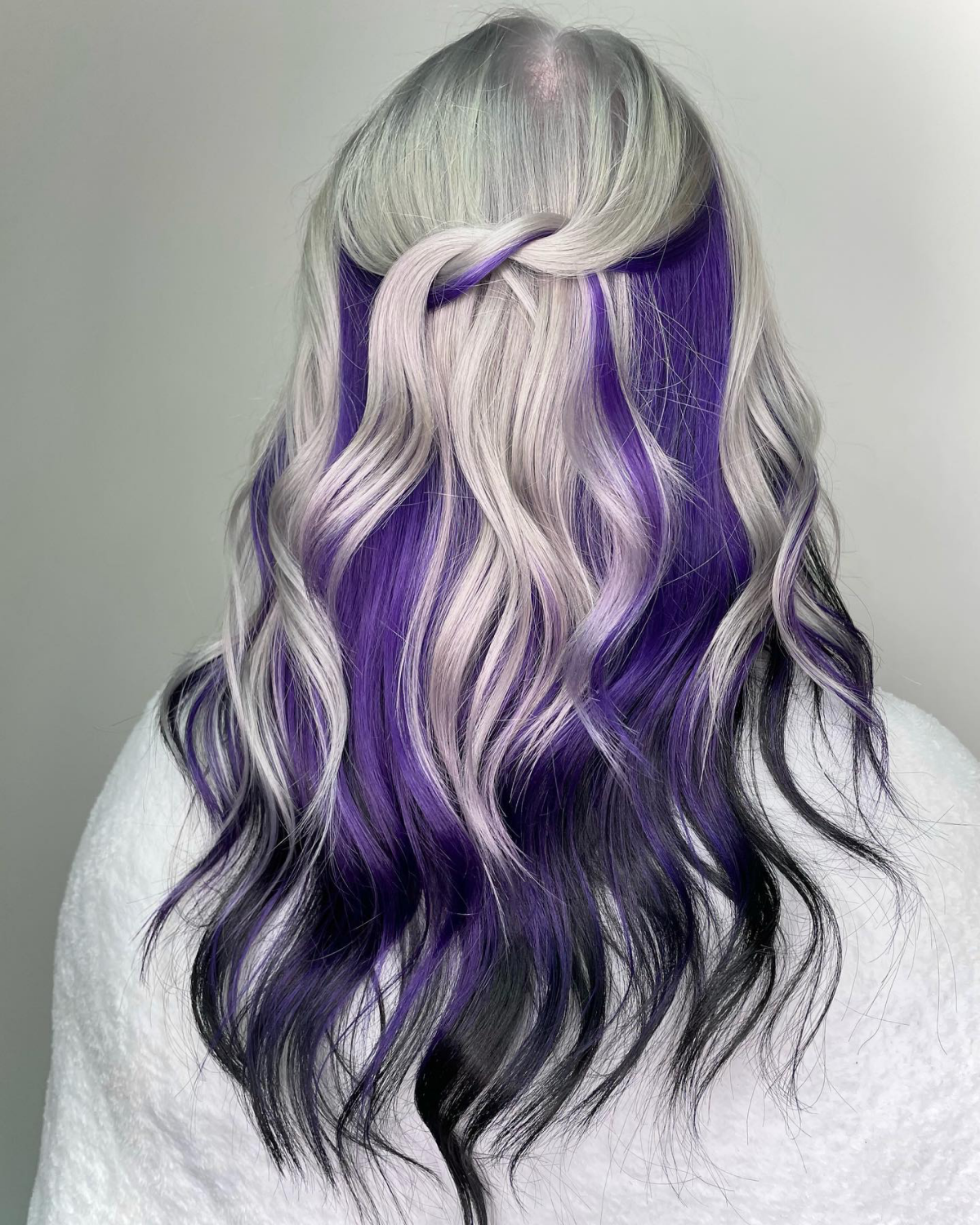
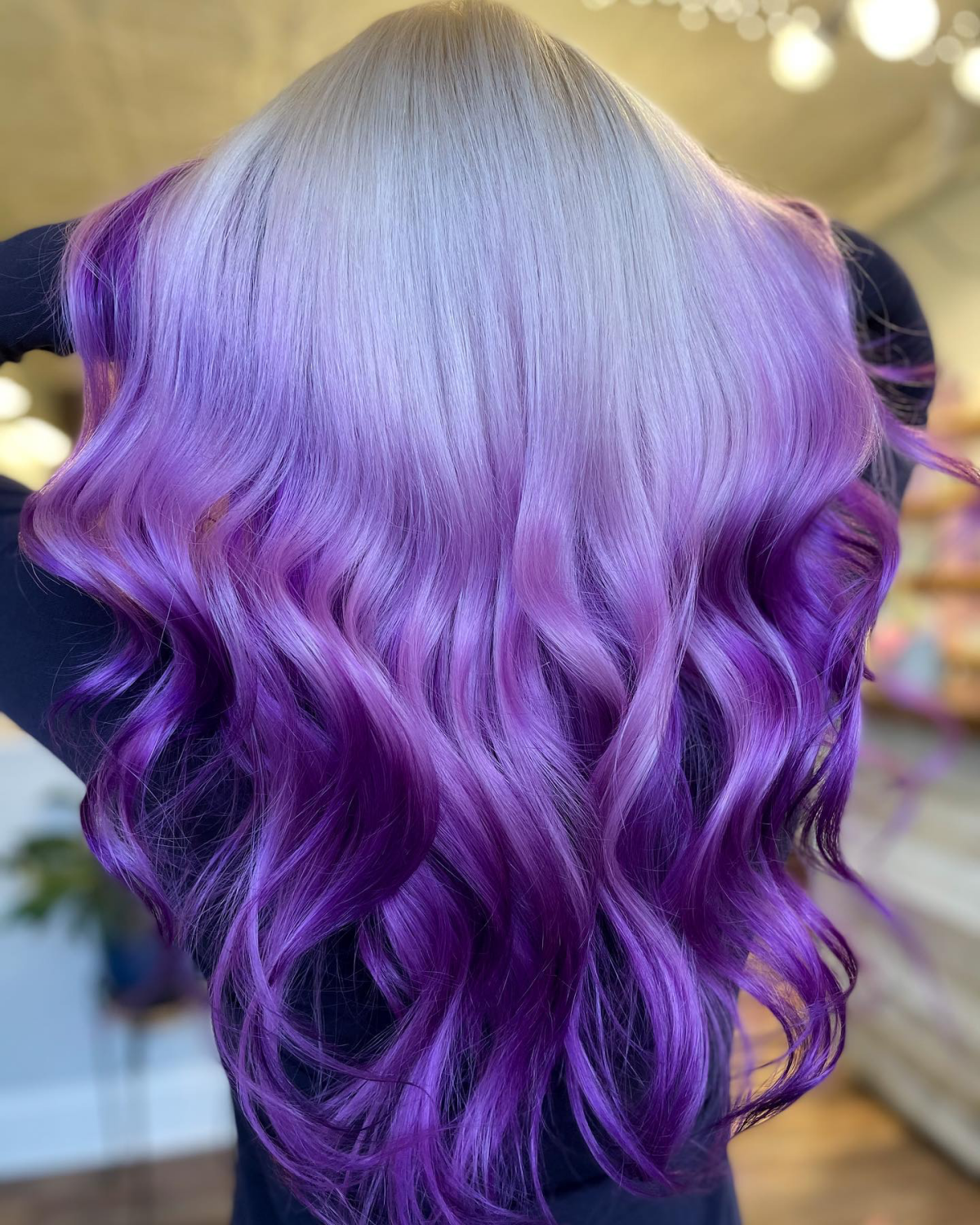
How do I choose the right shade of purple for my skin tone?
Think in terms of undertones. If you have cool undertones (veins look blue, you suit silver jewelry), lean into blue-based purples like indigo, lavender, or periwinkle. For warm undertones (veins look green, you rock gold), vibrant magenta, rich plum, or warmer violet shades will be incredibly flattering. When in doubt, a true amethyst sits beautifully in the middle and tends to suit almost everyone.
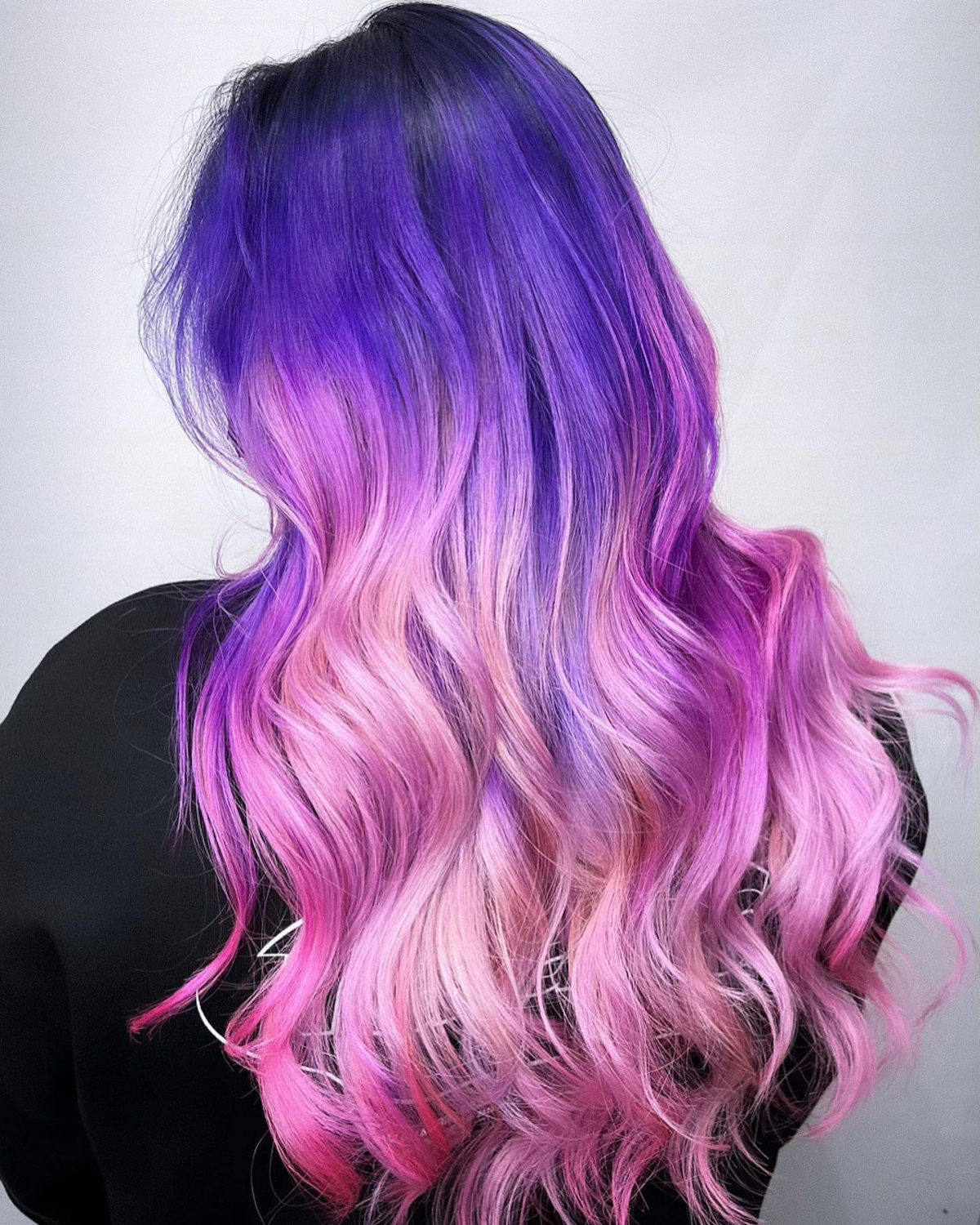
More than any other color, purple dye molecules are notoriously large. This means they sit more on the surface of the hair shaft rather than penetrating deeply.
This is why purple, especially pastel lavender, can fade faster than other shades. It’s not your fault; it’s physics! Using a color-depositing conditioner once a week is less of a suggestion and more of a necessity to keep that magical hue topped up between salon visits.
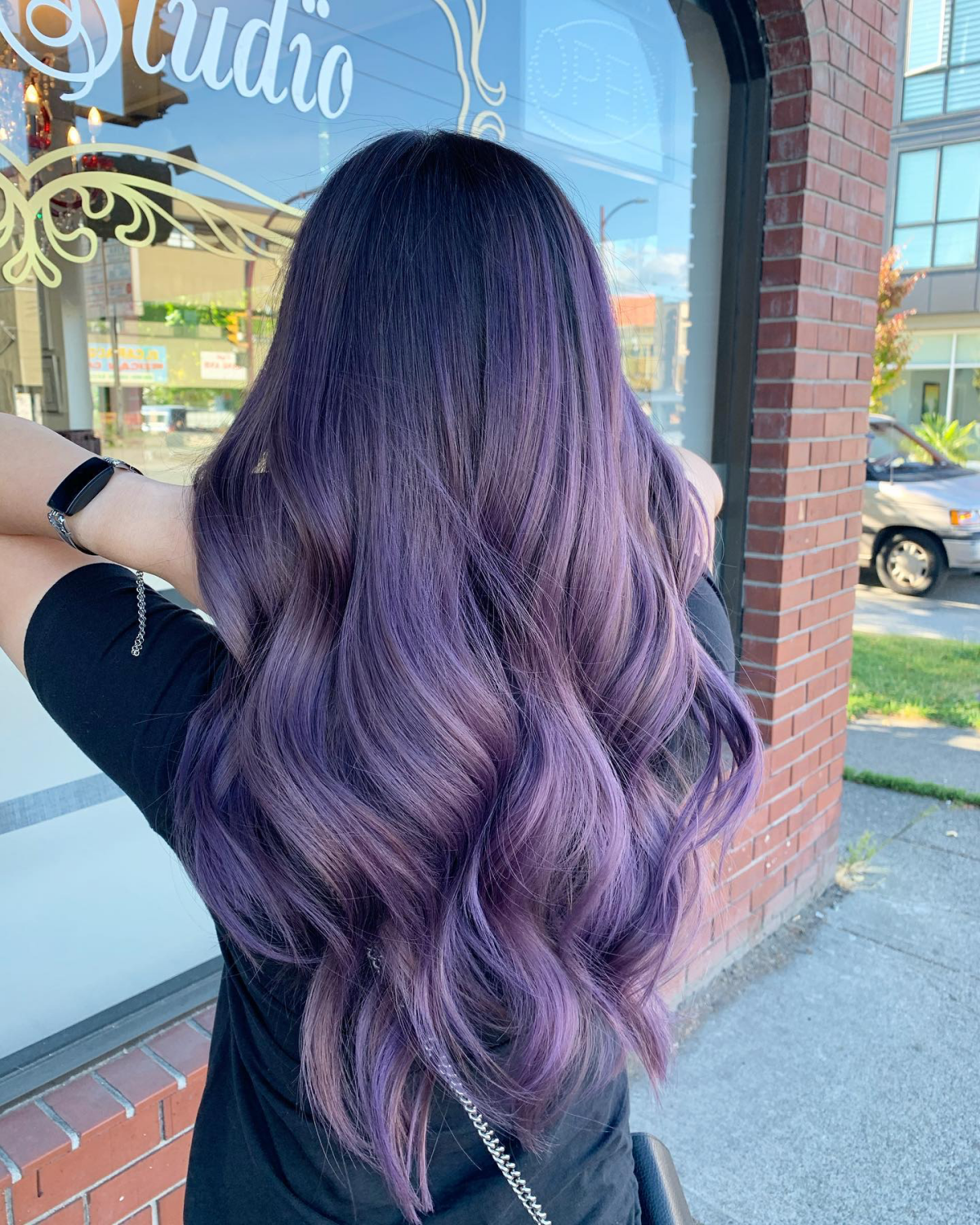
Salon Gloss vs. At-Home Conditioner: A professional gloss treatment seals the hair cuticle, adds immense shine, and uses salon-grade pigments for a rich, even tone refresh. It’s a 30-minute in-salon service that can revive your ombre significantly.
Color-Depositing Conditioner: Products like Keracolor Color + Clenditioner or Overtone are designed for home use. They deposit a small amount of color with each wash, perfect for fighting fade on a weekly basis but won’t provide the same intensity or longevity as a pro gloss.
The best strategy? Use both—a salon gloss every 6-8 weeks and a color-depositing conditioner in between.
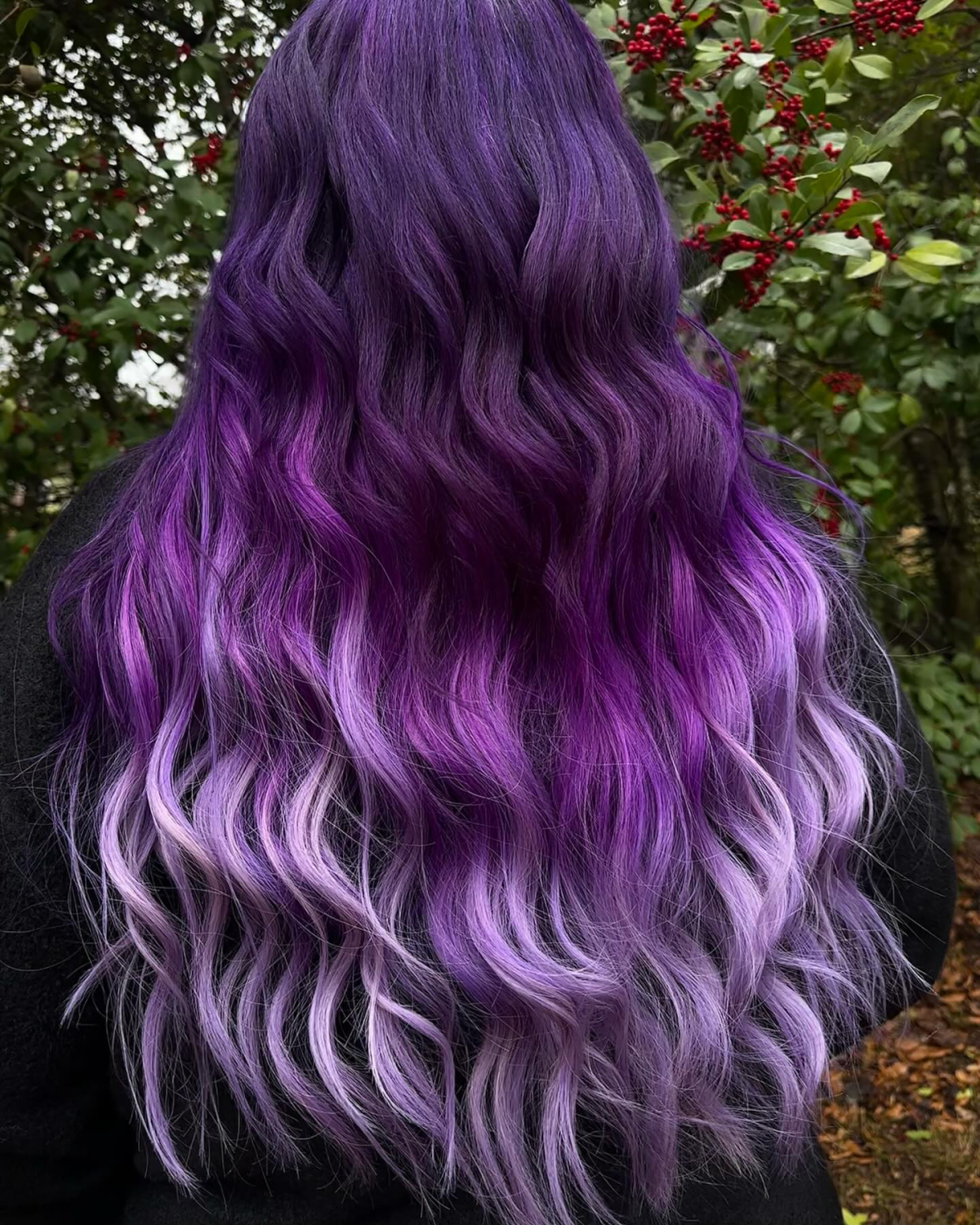
The secret to keeping your ombre from looking dull or brassy isn’t just about the purple. It’s about the blonde underneath. Once a week, swap your color-safe shampoo for a purple shampoo (yes, purple on purple!). This will neutralize any yellow tones creeping into the lightened ends, ensuring the base for your violet hue stays crisp and clean, making the color appear richer and more intentional.
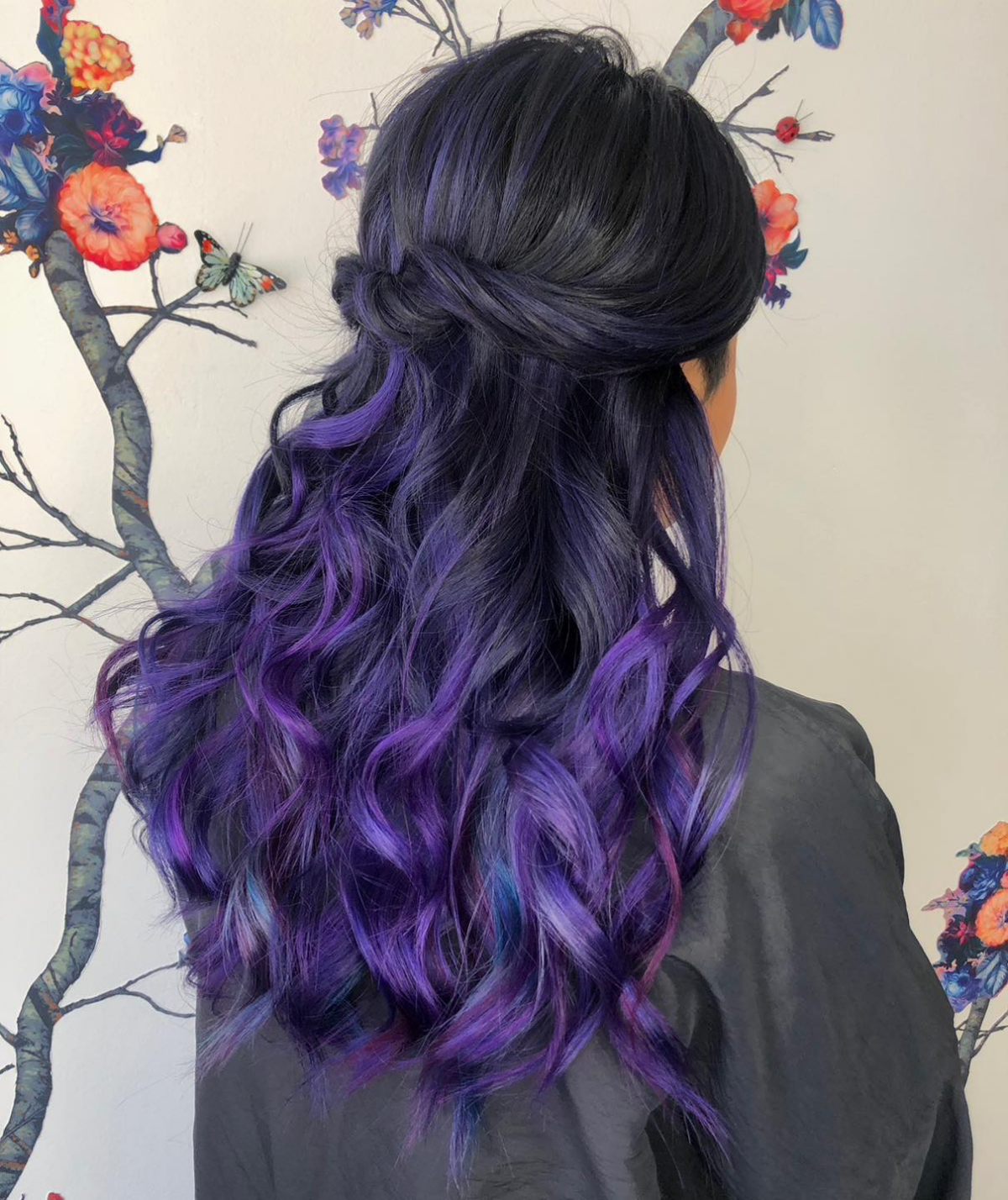
- Vibrancy that lasts for weeks longer.
- Hair that feels silky, not like straw.
- Significantly less breakage and split ends.
The secret? Integrating a bond-building treatment into your routine. A weekly mask like Olaplex No. 3 or a post-shower leave-in like the K18 Leave-In Molecular Repair Mask works on a structural level to repair the bonds broken during the lightening process. This isn’t just conditioning; it’s reconstruction.
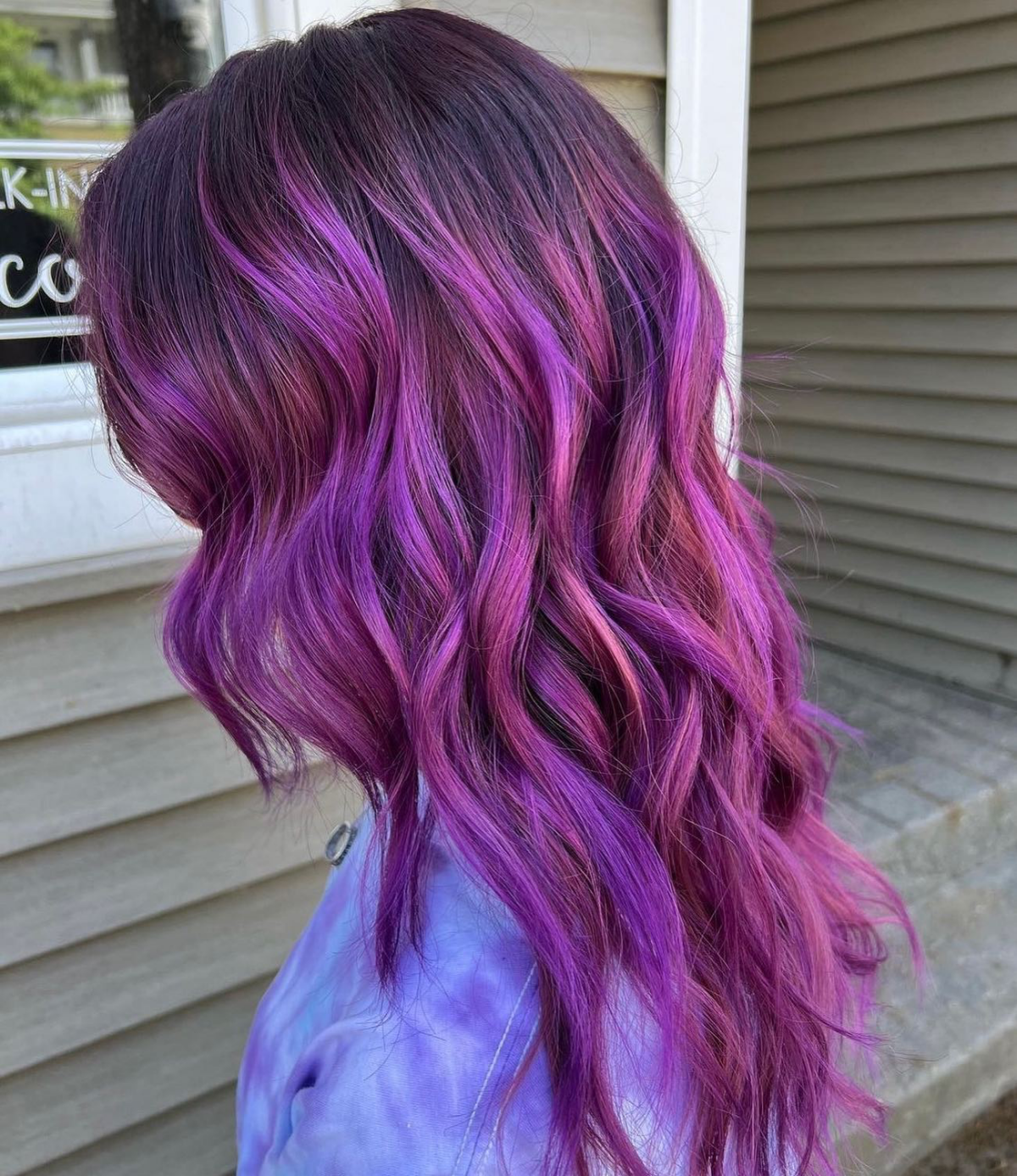
“The number one killer of fashion colors is hot water and harsh shampoos.” – Guy Tang, hairstylist and vivid color master.
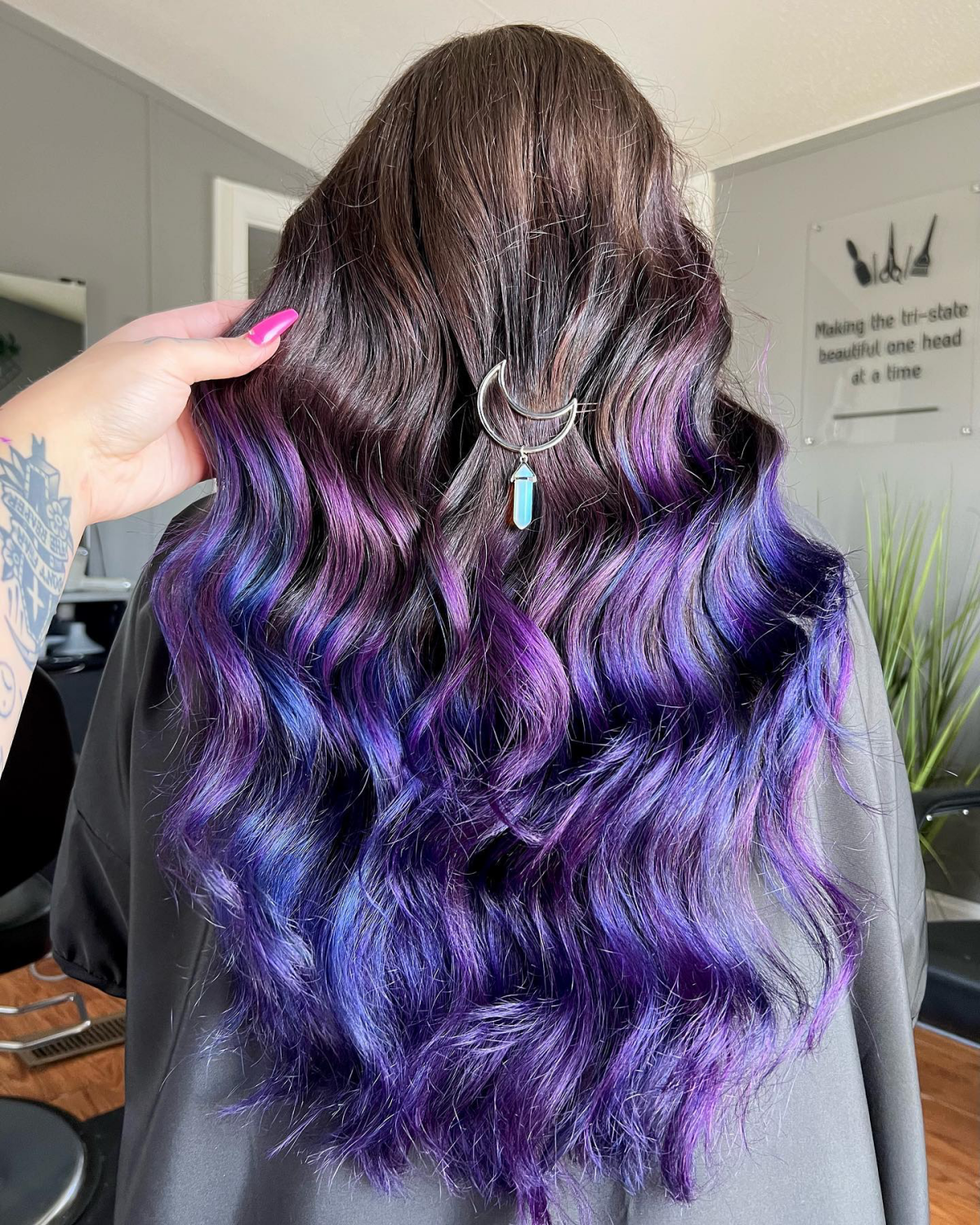
Embrace the ‘Galaxy Hair’ trend by weaving in complementary shades. A deep indigo root melting into a violet and magenta ombre gives an incredible cosmic depth. For a softer look, ask your stylist to incorporate ribbons of silvery-blue or pastel pink alongside the purple. This adds dimension and makes the overall style look even more complex and bespoke.
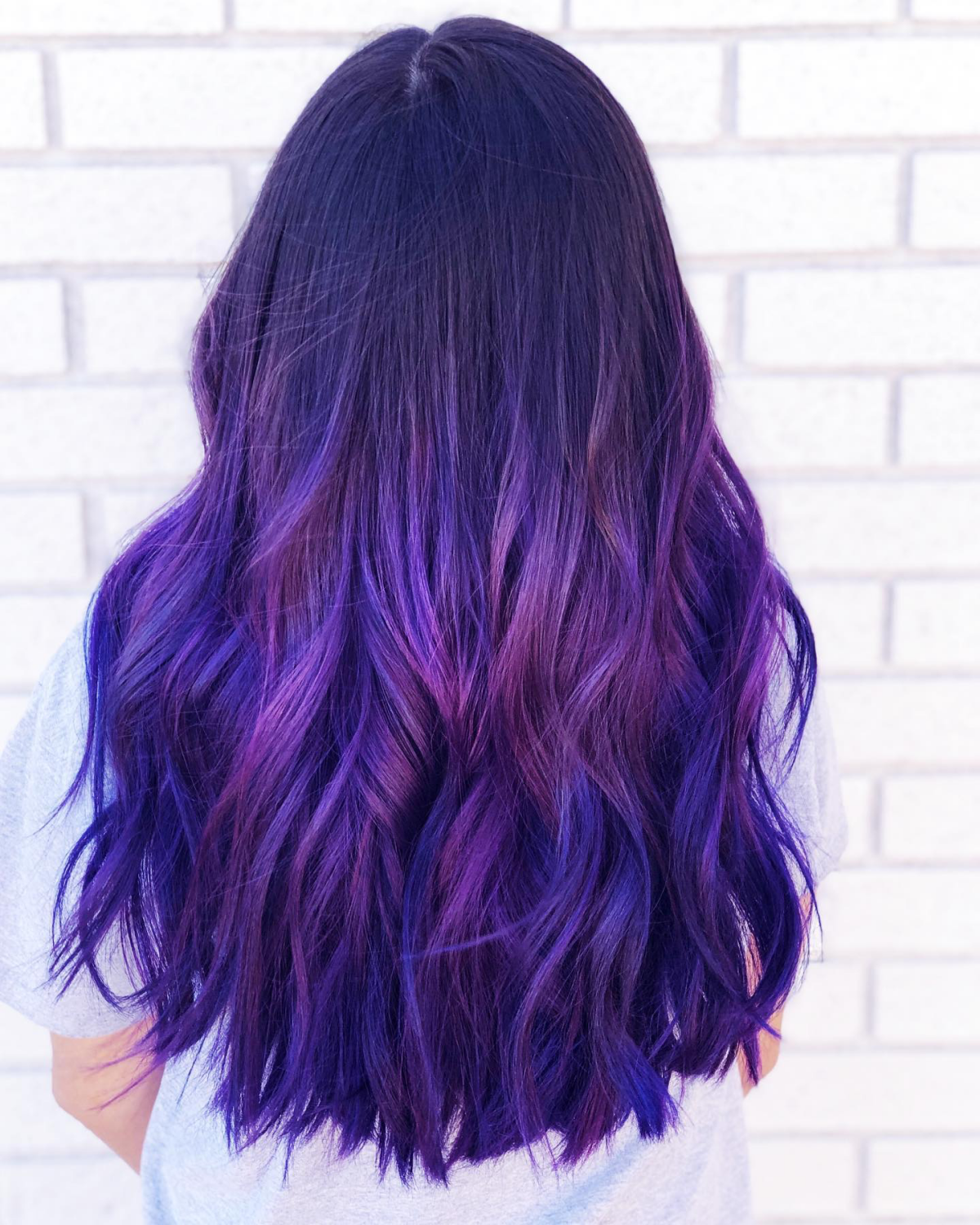
Heat styling is your color’s worst enemy. Before you even think about picking up a flat iron or curling wand, generously apply a heat protectant spray. High temperatures don’t just damage the hair; they actively degrade the color molecules, causing your vibrant purple to turn dull and faded in an instant. Think of it as sunscreen for your hair—absolutely non-negotiable.
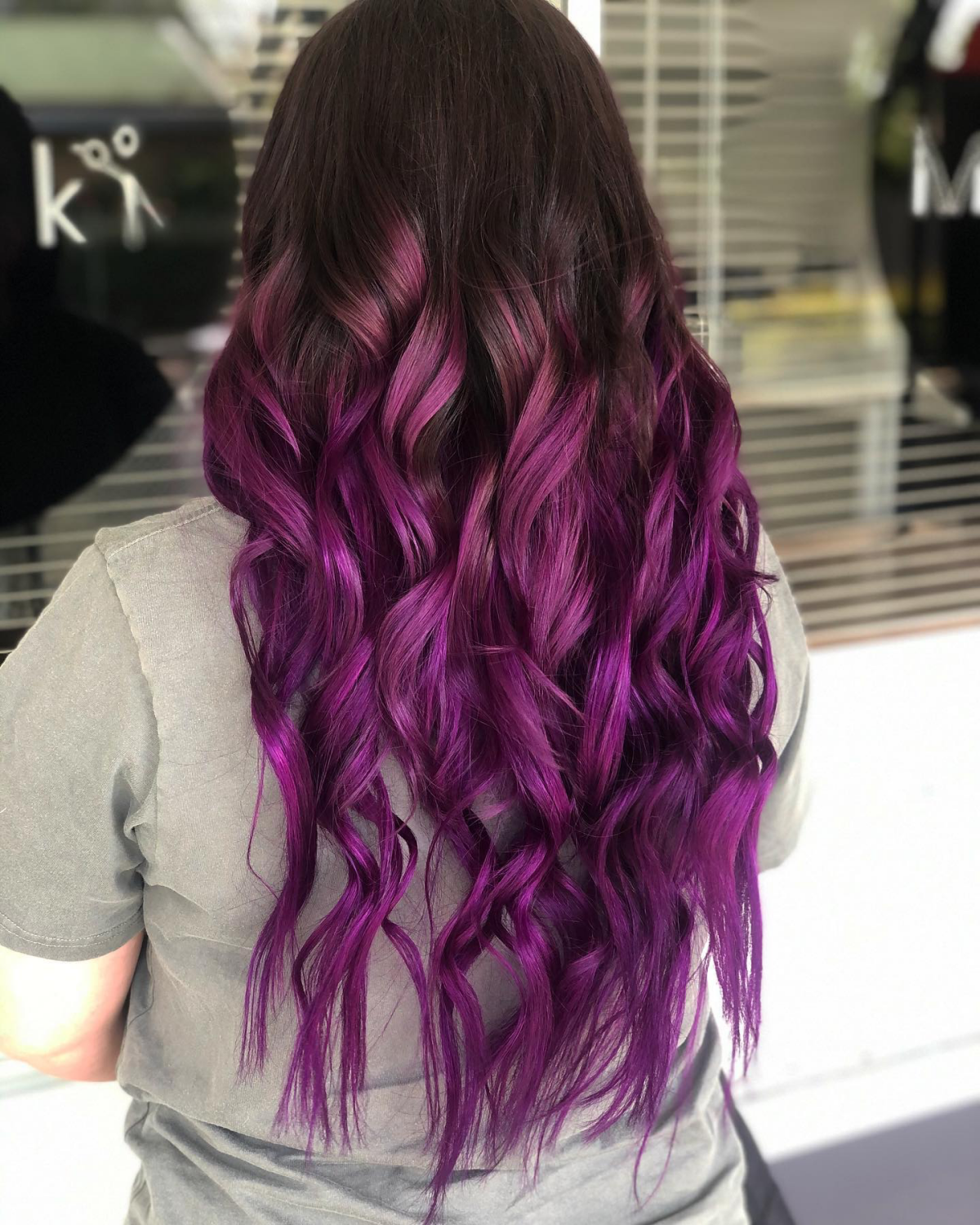
Want to extend the life of your color and your budget? Here’s how to stretch those salon visits:
- Wash your hair as infrequently as possible. Dry shampoo is your best friend.
- When you do wash, use cool or lukewarm water. Hot water opens the cuticle and lets color escape.
- Switch to sulfate-free shampoos and conditioners. Brands like Pureology or Redken’s Color Extend Magnetics line are specifically formulated to be gentle on color-treated hair.
- Avoid chlorine! If you swim, wet your hair with tap water and apply conditioner *before* getting in the pool to create a barrier.
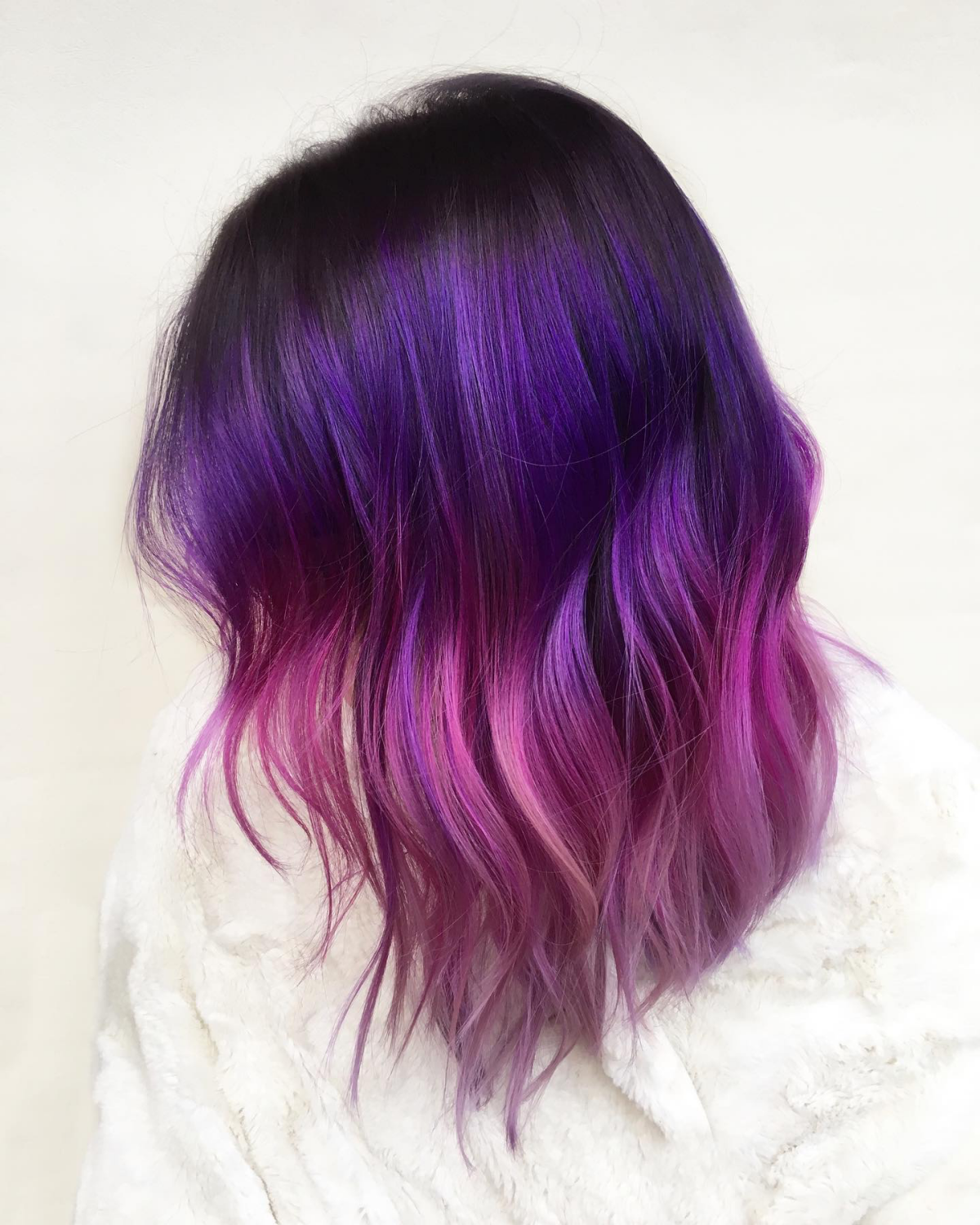
The transition from your natural color to the purple is the most crucial part of the ombre. A seamless blend is what makes it look expensive and professional. Talk to your stylist about techniques like ‘teasylights’ or ‘balayage’ for the transition zone. This creates a soft, diffused gradient rather than a hard, dip-dyed line.
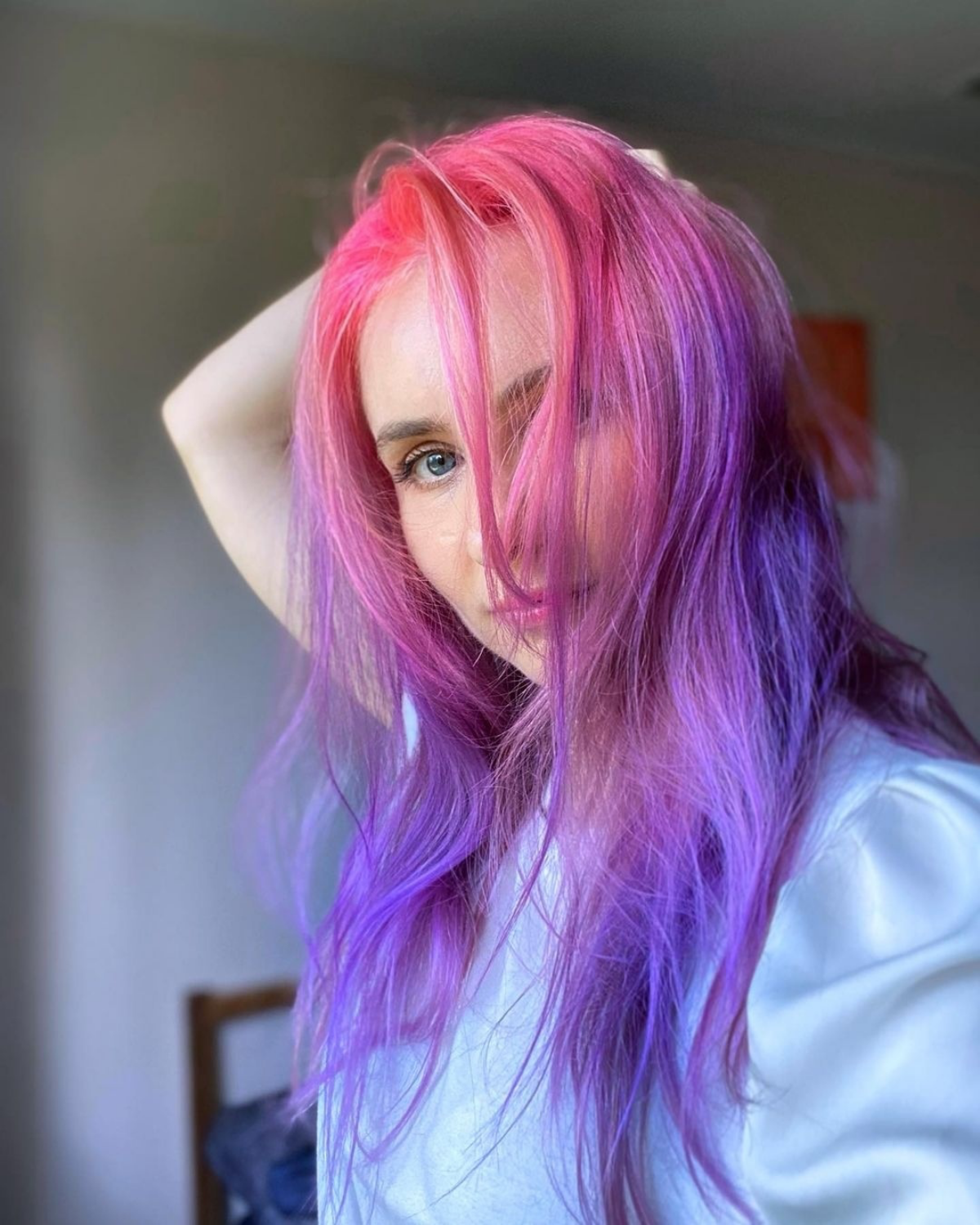
Historically, the color purple was so expensive to produce that only royalty and the extremely wealthy could afford it. The dye originally came from a species of sea snail.
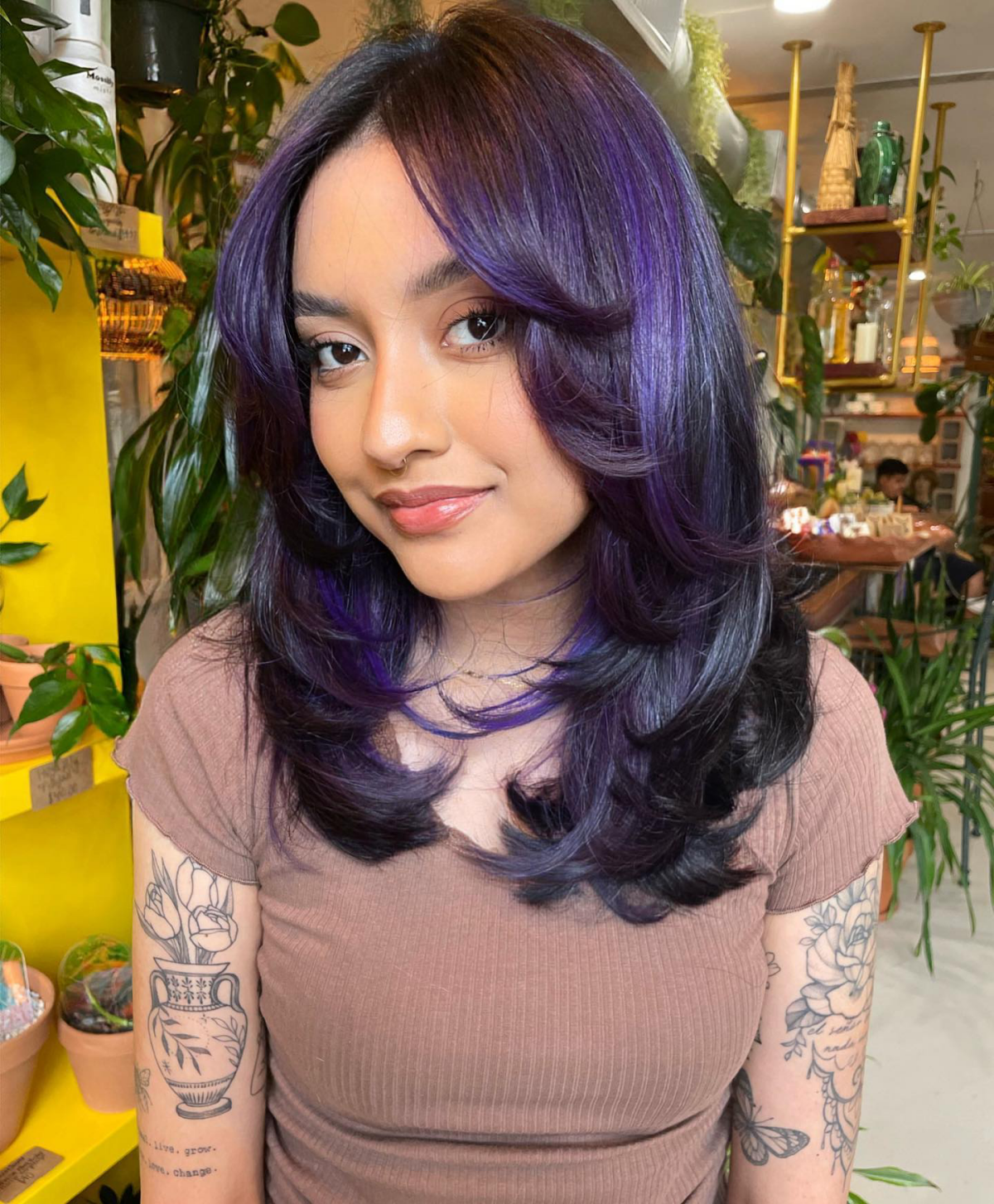
Don’t underestimate the power of a clarifying treatment *before* your color appointment. A week prior, use a clarifying shampoo to remove any product buildup, minerals, or oils. This creates a perfectly clean canvas, allowing the bleach and color to apply more evenly and penetrate more effectively. Just don’t do it the day of, as you want some natural oils to protect your scalp.
Wearing a bold color like purple isn’t just a hair choice; it’s a statement. It projects creativity, confidence, and a touch of magic. Be prepared for compliments from strangers and a newfound sense of visibility. It’s a powerful way to express your personality without saying a word.










